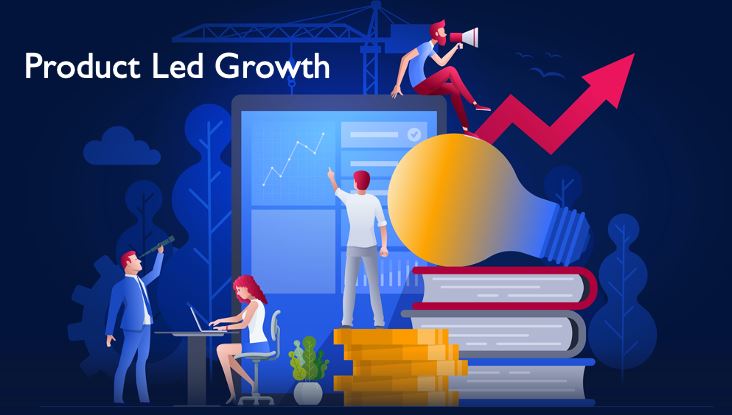B2B SaaS companies are always looking for ways to grow and scale their businesses. In the sales cycle, there is a reversal of the traditional sales model of bringing a buyer from point A to point B for a product-driven company. They provide the buyers with the necessary means to use the products and help them achieve meaningful outcomes. The upgrade to a paid plan becomes a no-brainer at this point.
This PLG blog will help you understand more about it through its three fundamentals.
What is PLG?
A product-led growth (PLG) initiative is a software product readily accessible to end-users without any restrictions. Several products used every day employ the PLG model, including Canva, Figma, and Shopify.
Companies that provide end-users with the option to sign up and begin using their products immediately provide them with a lot of value. Thus, users gain greater control over purchasing software.
The three pillars of product-led growth
Design for the end-user
The end users now hold the steering wheel. While organizations orient themselves around formal ROI, end users are real people seeking immediate solutions to their problems. Putting your customers’ needs first means listening to their concerns and improving your product consistently to solve them more effectively.
Provide value before getting returns
Giving and taking are fundamental to good relationships. If you want your users to return the favor, you must provide them with something of value. For this reason, product-driven companies prioritize short time to value (TTV). It is commonly applied through a freemium model, self-serve free trial, or open-source model, allowing users to access parts or all of the product before paying. But delayed paywalls don’t necessarily deliver value.
You must convince a user that your product is worth his money before entering his credit card information. To achieve this, you need to either solve the user’s problem or explain to him how your software will improve his everyday life within a short period. The challenge is not only to create features and functionality that embody those values but also to remove things that distract from or hinder them.
- If one can purchase a product purely through a self-service experience, it’s essential to simplify the initial product experience.
- When products require human interaction, it is most effective to focus on customer success before sales when delivering value.
- Customer success can help meet the demands of being at the front of the funnel by investing in rich documentation and enabling technologies. It is especially true for products where creating value for the end-user requires an upfront investment of the user’s time.
In order to build a successful PLG business, it’s essential to reduce all obstacles and solve an immediate problem.
Invest in the product with a go-to-market mindset
First-time clients may discover that software creation costs are higher than the cost of professional services.
Providing a similar service to another customer is then near-zero marginal cost. It may result in a highly profitable investment over the long run.
The go-to-market strategies of PLG companies allow them to invest in their product to drive conversion, acquisition, and expansion. It is accomplished by:
- Analyzing and measuring user behavior by investing in reliable product data.
- Build a growth function that oversees enhancing distribution, enabling, and capturing value for the product.
- Implementing go-to-market experiments that improve the user journey.
Conclusion
Hopefully, this PLG blog was helpful to you. Nowadays, the buyer has a wide range of options with all the control. Testing a product is essential to the buying process, whether you’re selling perfume or software. Customers demand it. A company that embraces product-led growth aligns the business approach with enduring consumer trends.

